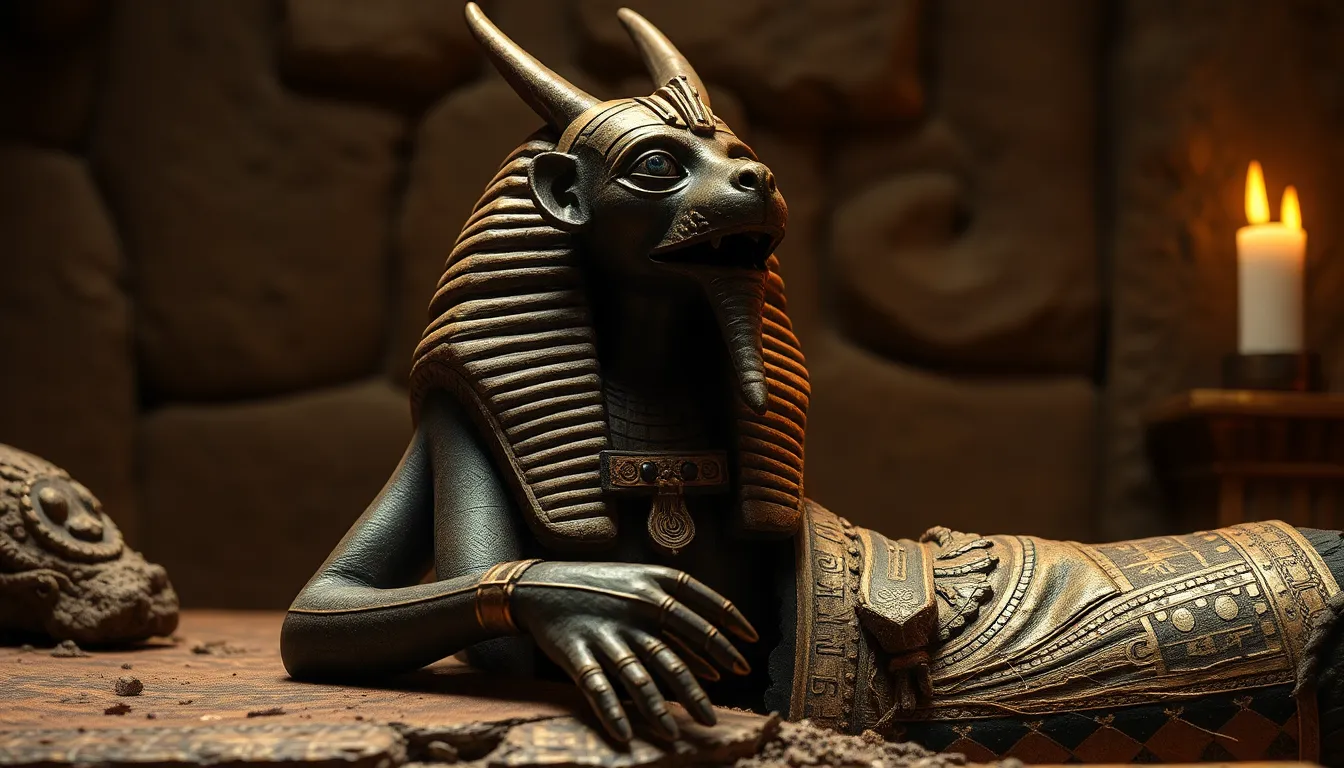The Art of Mummification: A Gift from Anubis
I. Introduction
Mummification is one of the most iconic practices of ancient Egypt, reflecting a deep understanding of preservation and an intricate belief system surrounding death and the afterlife. Central to this process was Anubis, the jackal-headed god, who played a significant role in funerary practices. This article explores the historical context of mummification, the role of Anubis, the detailed mummification process, associated beliefs, and the cultural significance that has persisted over millennia.
II. Historical Context of Mummification
The practice of mummification in ancient Egypt has its origins over 4,500 years ago, evolving significantly through various dynasties. Initially, natural preservation through burial in dry sand was common. However, over time, the techniques became more sophisticated, reflecting the Egyptians’ growing understanding of anatomy and chemistry.
Key points in the historical context include:
- Origins: The earliest mummies date back to the Predynastic period, where bodies were naturally desiccated in the hot, arid climate.
- Evolution: By the time of the Old Kingdom, elaborate techniques were developed, including the use of resins and oils.
- Cultural beliefs: Mummification was rooted in the Egyptians’ belief in an afterlife, where the soul would continue its existence.
III. The Role of Anubis in the Mummification Process
Anubis, often depicted as a black jackal or a man with a jackal’s head, symbolizes death, the afterlife, and the process of mummification itself. His association with the dead made him a pivotal figure in funerary rites.
The roles of Anubis include:
- Protector of the Dead: Anubis was believed to guard the deceased’s body and guide them through the underworld.
- Rituals and prayers: During mummification, priests would invoke Anubis to ensure safe passage for the deceased and to bless the mummification process.
IV. The Mummification Process: Techniques and Materials
The mummification process involved a series of meticulous steps designed to preserve the body for eternity. This process typically took 70 days and involved the following key stages:
- Removal of Internal Organs: The internal organs were removed to prevent decay, with the heart often left in place as it was believed to be the center of wisdom.
- Desiccation: The body was covered with natron, a naturally occurring salt, to absorb moisture.
- Oiling: Oils and resins were applied to the body to aid in preservation and protect the skin.
- Wrapping: The body was carefully wrapped in linen, often with amulets placed between layers for protection.
- Final Rites: The mummified body was placed in a sarcophagus, followed by ceremonial offerings and prayers invoking Anubis.
Materials used in the mummification process included:
- Natron: Essential for drying out the body.
- Oils: Used for both preservation and to anoint the body.
- Linen: The primary material for wrapping the mummified body.
V. The Beliefs and Rituals Associated with the Afterlife
The ancient Egyptians held rich beliefs about the afterlife, viewing it as a continuation of life on earth. They believed in the concepts of “Ka” (the vital essence) and “Ba” (the personality), both of which needed a preserved body to thrive in the afterlife.
Funerary rituals included:
- Weighing of the Heart: A critical judgment process where the deceased’s heart was weighed against the feather of Ma’at to determine their fate.
- Burial Practices: Tombs were filled with items for use in the afterlife, reflecting the deceased’s status and beliefs.
VI. Mummification Beyond Egypt
While mummification is most closely associated with ancient Egypt, other cultures also practiced similar techniques:
- Inca Civilization: Mummification involved drying bodies in high-altitude tombs.
- Tarim Mummies: Found in China, these mummies date back to 1800 BCE and show evidence of complex burial practices.
The influence of Egyptian mummification extended to neighboring civilizations, inspiring their own practices. The fascination with mummification continues globally, influencing art, literature, and film.
VII. Modern Discoveries and Scientific Insights
Recent archaeological findings have shed light on ancient mummification practices. Discoveries include:
- Advanced Imaging Techniques: CT scans and MRI have allowed scientists to explore mummies without unwrapping them.
- Biochemical Analysis: Studies of the materials used in mummification provide insights into ancient Egyptian medicine and practices.
Ongoing research continues to reveal the complexities of mummification and its implications for understanding ancient cultures and even modern medicine.
VIII. Conclusion
The significance of mummification in ancient Egypt and the role of Anubis as its divine protector highlight a unique intersection of art, religion, and science. The enduring legacy of mummification not only informs us about ancient practices but also captivates contemporary culture, inspiring ongoing exploration and fascination.
In summary, the art of mummification remains a profound testament to the Egyptians’ beliefs in life after death, their complex rituals, and the cultural legacy that continues to resonate today.




